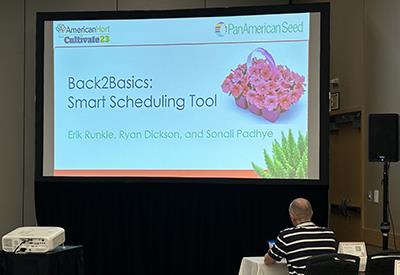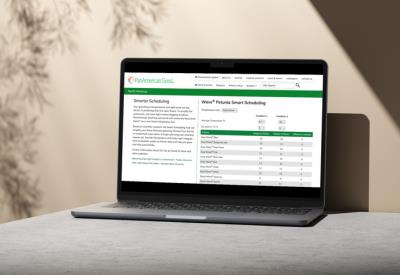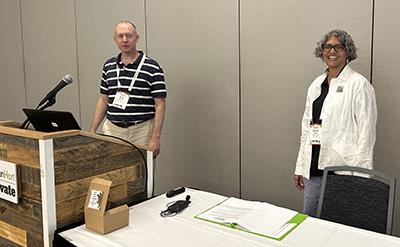Smart Scheduling - Knowing Before You Grow
Sarah Makiejus Global Marketing Manager
The technical and culture team at PanAmerican Seed is always looking for ways to make growers' lives easier. One of the pain points often shared during production is the ability to meet tight shipping windows and send plants to market in-color. For important crops like Wave Petunias and the new retail vegetable program Kitchen Minis, taking the guesswork out of scheduling would go a long way during planning.
At Cultivate'23 in Columbus, Ohio, Dr. Sonali Padhye co-hosted an educational session in collaboration with the floriculture research team at Michigan State University, lead by Dr. Erik Runkle. At this talk, they shared their findings on how light levels and greenhouse temperatures are key factors in predicting when Wave Petunias will first flower. The data collected is now gathered in a very useful online tool called Smart Scheduling.

Smart Scheduling answers the questions: "How do I schedule Easy Wave Petunia for Mother's Day sales?" and "How do I build a year-round program for the Kitchen Minis Collection?"
The experiments done by Michigan State University (Wave) and the University of Arkansas (Kitchen Minis) explored greenhouse variables, such as temperature, light spectrum, and daily light integrals (DLI), and created modeling for an easy-to-use online tool.

The PanAmerican Seed Smart Scheduling Tool is now live at our website! Check it out at the links below and see it in-action. The tool lets you input your greenhouse parameters, which results in a weeks-to-flower schedule by cultivar.
Smart Schedule - Wave Petunias
Smart Schedule - Kitchen Minis Collection
Here are a few tips the presenters shared during their Cultivate'23 session specifically dealing with creating long days:
- Deliver at least 1-2 μmol·m-2·s-1 at plant height.
- Operate until April 1, when the days become naturally long.
- Operate for 4 hours during the middle of the might, or at the end of the day until the day is > 14 hours.
- Cyclic lighting can be effective, but it depends on many factors including intensity, frequency of lighting, and duration of each lighting period.
- When the average daily light integral (DLI) is low, lamps that emit red and far-red light are most effective.
Innovative collaboration is always on our minds, and we're thrilled to share results with the industry. Thank you to the hard-working university teams and participating greenhouses that encouraged and monitored these trials. And a special thank you to Dr. Padhye for helping us bring such a useful tool to-life.



